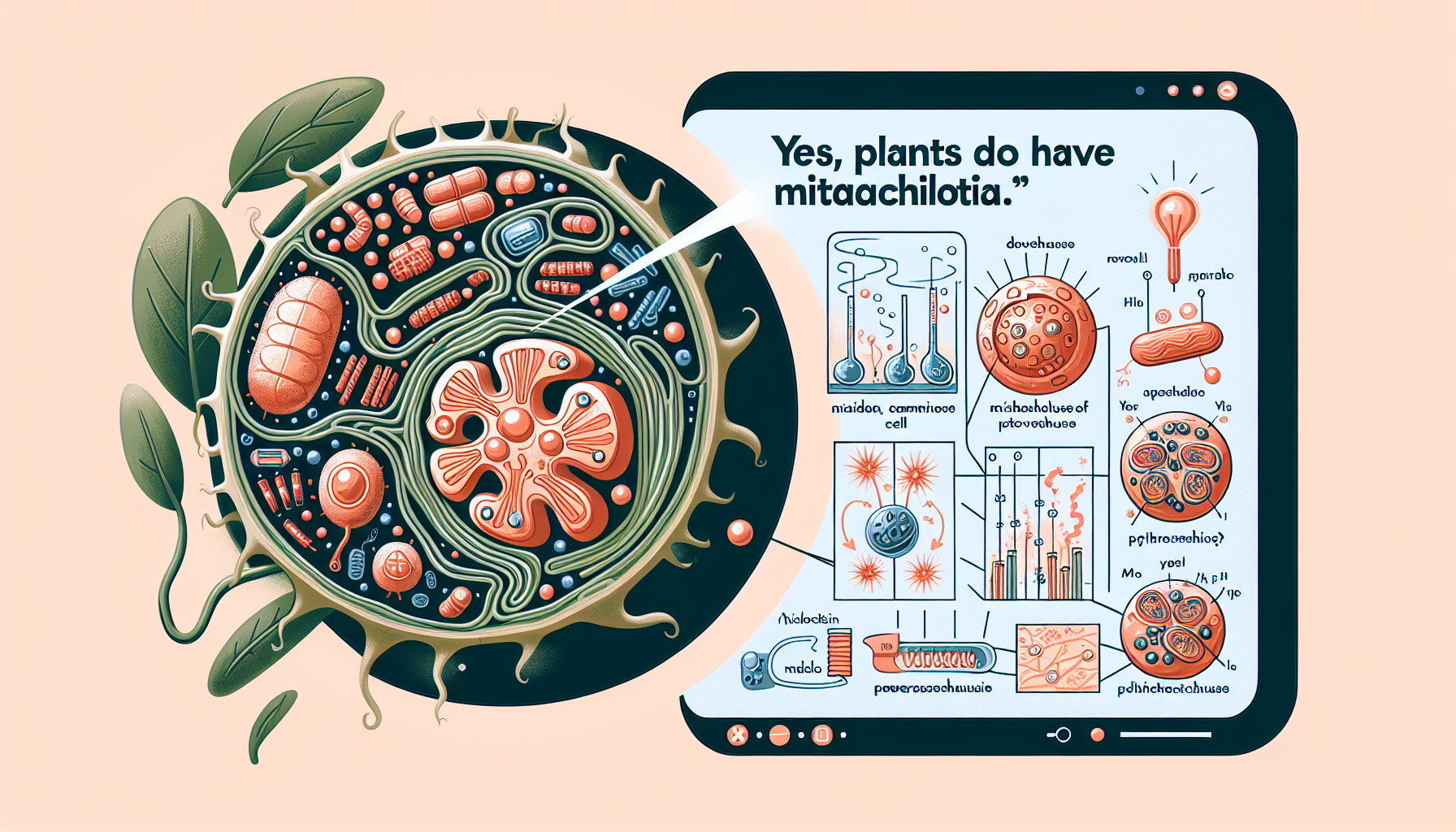
does plants have mitochondria
Do Plants Have Mitochondria? Understanding the Powerhouses of Plant Cells
When we think about mitochondria, the first thing that comes to mind is their nickname: the "powerhouses of the cell." These tiny yet mighty organelles are often associated with animal cells, but an important question arises: do plants have mitochondria too? The answer is a resounding yes! Let’s explore why plants have mitochondria, what role they play, and how they interact with other cellular processes like photosynthesis.
The Role of Mitochondria in Plant Cells
Mitochondria are essential organelles found in the cells of nearly all eukaryotic organisms, including plants. Their primary function is to generate energy in the form of adenosine triphosphate (ATP) through a process called cellular respiration. This energy is crucial for powering various cellular activities.
In plants, mitochondria work alongside chloroplasts, the organelles responsible for photosynthesis. While chloroplasts capture sunlight to produce glucose and oxygen, mitochondria break down this glucose to release usable energy. This collaboration ensures that plants can meet their energy demands, even in the absence of sunlight, such as during the night or in shaded environments.
How Do Mitochondria and Chloroplasts Work Together?
One might wonder why plants need mitochondria if they have chloroplasts to produce energy. The truth is that chloroplasts are only part of the energy equation. While they produce glucose and oxygen during the day, plants still need a way to convert these products into ATP, the energy currency of the cell. This is where mitochondria come into play.
Here’s how the process works:
- During photosynthesis, chloroplasts convert sunlight, carbon dioxide, and water into glucose and oxygen.
- The mitochondria then take this glucose and oxygen and carry out cellular respiration, which produces ATP.
- This ATP is used for various cellular functions, including growth, reproduction, and repair.
Without mitochondria, plants would not be able to efficiently produce the energy needed for survival, especially during times when photosynthesis cannot occur.
Do Mitochondria in Plants Differ from Those in Animals?
While the basic structure and function of mitochondria are similar in both plant and animal cells, there are a few key differences:
- Dual energy sources: In plants, mitochondria must work in harmony with chloroplasts, unlike in animals where mitochondria are the sole producers of ATP.
- Alternative metabolic pathways: Plant mitochondria can engage in unique metabolic processes, such as photorespiration, which is not found in animal mitochondria.
Despite these differences, the core role of mitochondria as energy producers remains consistent across both plant and animal cells.
Conclusion
So, do plants have mitochondria? Absolutely! These vital organelles play an indispensable role in energy production, ensuring that plants can thrive in a variety of conditions. Mitochondria and chloroplasts work together to keep plants alive and functioning, demonstrating the incredible complexity and efficiency of plant cells.
If you’re fascinated by plant biology and want to learn more about the intricate processes that keep plants alive, check out our article on how photosynthesis works.
Have questions or insights about plant cells and mitochondria? Share your thoughts in the comments below!